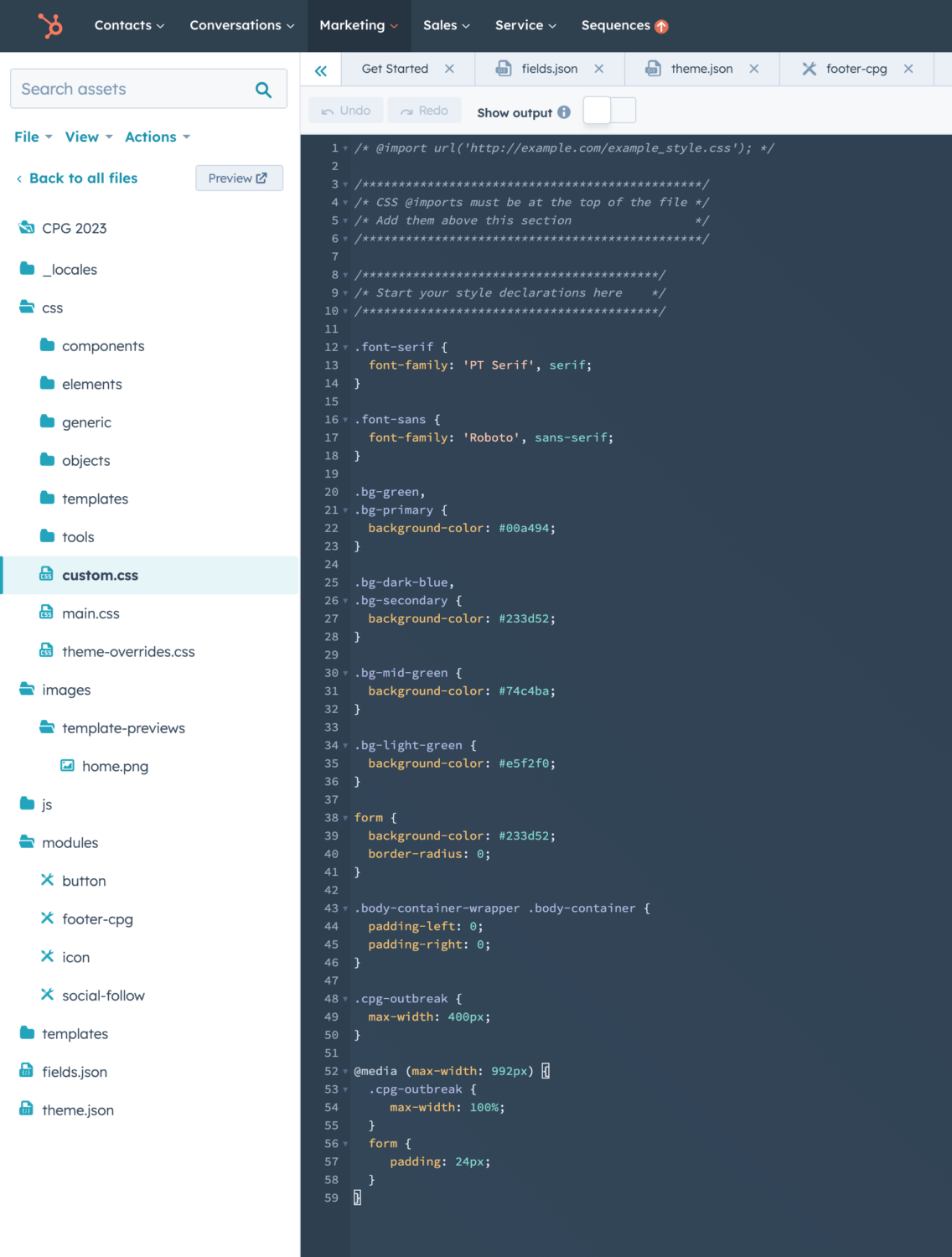
A tailor of HubSpot fabrics
Your content should be tailored to meet the needs of your audience and engage them in meaningful ways.

Specialities
As a HubSpot developer, there are several tasks that I can do to help your clients improve their marketing efforts.
Develop custom templates
Create custom templates for landing pages, emails, and blog posts that match your client’s branding and provide a consistent user experience.
Build custom modules
I can build custom modules that allow clients to add unique features to their templates without requiring any coding experience.
Set up integrations
Integrate HubSpot with other third-party tools, such as Salesforce, WordPress, or Shopify, to improve clients’ workflow and data management.
Create custom modules and web apps
HubSpot provides an API that allows developers to build custom modules and web apps that extend the functionality of the platform.
Customize forms and CTAs
Customize forms and calls-to-action (CTAs) to align with your client’s branding and messaging.
Develop custom reports and dashboards
Create custom reports and dashboards that provide clients with insights into their marketing efforts.
Provide technical support
As a HubSpot developer, I can provide technical support to clients who are experiencing issues with their HubSpot implementation.
Optimize website performance
You can optimize website performance by improving page load times, implementing caching, and minimizing HTTP requests.
Conduct A/B testing
You can conduct A/B testing to determine which variations of content, CTAs, and landing pages perform best.
Train clients on using HubSpot
Finally, I can train clients on how to use HubSpot effectively, including how to create and publish content, manage contacts, and track performance metrics.
Custom Themes
A custom theme in HubSpot is a set of HTML, CSS, and JavaScript files that control the look and feel of your website. With HubSpot’s custom themes, you can create a unique design that reflects your brand’s personality, values, and messaging. The theme editor allows you to customize the layout, fonts, colors, and images of your website, without having to write code from scratch.
Site modules, on the other hand, are pre-built components that can be added to your custom theme. These modules provide functionality such as forms, CTAs, menus, and galleries, and can be easily customized to match your brand’s style.
As a web designer and frontend specialist, I can help companies by creating custom HubSpot themes and site modules that showcase their brand in a visually appealing and user-friendly way. You can use your expertise in HTML, CSS, and JavaScript to create custom designs, animations, and interactions that capture visitors’ attention and drive engagement.


Custom Themes with child theme support
Step 1: Define Your Target Audience
Before creating content, you need to identify your target audience. Who are they? What do they need? What are their pain points? By answering these questions, you can create content that is tailored to their needs and interests.
To define your target audience, start by creating buyer personas. A buyer persona is a fictional representation of your ideal customer. It includes information such as their demographics, job title, goals, challenges, and buying habits. Once you have created your buyer personas, you can use them to guide your content creation.

Step 2: Set Your Content Goals
Once you have identified your target audience, you need to set your content goals. What do you want to achieve with your content? Do you want to increase website traffic, generate leads, or improve brand awareness?
To set your content goals, start by defining your key performance indicators (KPIs). KPIs are metrics that you can use to measure the success of your content. Examples of KPIs include website traffic, social media engagement, and email open rates.
Step 3: Conduct a Content Audit
Before creating new content, it’s essential to conduct a content audit. A content audit involves reviewing your existing content to determine what is working and what isn’t. By conducting a content audit, you can identify gaps in your content and opportunities to improve.
To conduct a content audit, start by reviewing your website, blog, social media channels, and email marketing campaigns. Identify which pieces of content are performing well and which ones are not. Look for patterns and themes in your content to identify opportunities to improve.

Step 4: Develop Your Content Strategy
Now that you have defined your target audience, set your content goals, and conducted a content audit, it’s time to develop your content strategy. Your content strategy should outline the types of content you will create, the channels you will use to distribute your content, and the frequency at which you will create and publish content.
To develop your content strategy, start by identifying the types of content that will resonate with your target audience. This could include blog posts, social media updates, infographics, videos, and podcasts. Next, identify the channels that you will use to distribute your content. This could include your website, social media channels, email marketing campaigns, and paid advertising.
Finally, set a schedule for creating and publishing your content. This could be a weekly or monthly schedule, depending on your resources and goals. Make sure to include time for research, writing, editing, and promoting your content.
Step 5: Measure and Optimize Your Content
Once you have developed your content strategy, it’s essential to measure and optimize your content. This involves tracking your KPIs and making adjustments to your content strategy based on your results.
To measure your content, start by tracking your KPIs. This could include website traffic, social media engagement, email open rates, and conversion rates. Use analytics tools such as Google Analytics and Hubspot to track your KPIs and identify trends.
Based on your results, make adjustments to your content strategy. For example, if you find that your blog posts are not generating enough traffic, you may need to optimize your content for search engines or promote your blog posts more effectively on social media.

Hire me and let me help your brand
Konstruktiv can help organisations to achieve their business goals by creating a compelling online presence that attracts, converts, and delights their customers. Whether they are looking to generate leads, increase sales, or improve customer retention, a well-designed website can help them to achieve these objectives.
Let me help you enhance your online presence with HubSpot custom themes and site modules, please don’t hesitate to contact me. I’d be happy to discuss how we can work together to create a website that reflects their brand and achieves their business goals.
Hit me up @ sander@konstruktiv.nl